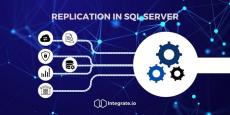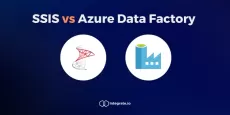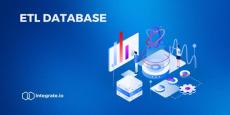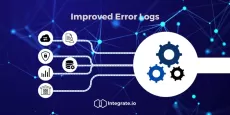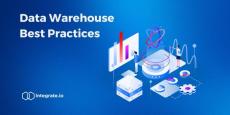|
By Donal Tobin
Microsoft offers three key ETL tools to handle data integration and transformation tasks: Azure Data Factory, SQL Server Integration Services (SSIS), and Power Query. Each tool is tailored for specific use cases, from large-scale cloud projects to self-service analytics.
|
By Donal Tobin
Databricks is a cloud-based platform that simplifies ETL (Extract, Transform, Load) processes, making it easier to manage and analyze large-scale data. Powered by Apache Spark and Delta Lake, Databricks ensures efficient data extraction, transformation, and loading with features like real-time processing, collaborative workspaces, and automated workflows.
|
By Donal Tobin
ETL is evolving with trends like AI-driven automation, real-time processing, and cloud-native tools. Businesses leveraging modern ETL solutions, such as Snowflake or Apache Kafka, can process data faster from different sources and reduce errors significantly.
|
By Makoto Saito
The strong rise of data products in today’s world has made companies introduce new best practices and stricter Service Level Agreements (SLAs) due to their critical functions. Whether these are internal or external-facing data products, experiencing downtime due to data replication issues is a major concern. In the ideal world, there would be no data replication issues, but in reality, they can occur for various reasons, which we’ve outlined below.
|
By Makoto Saito
In Part 1 of this database replication resync time benchmark study, we discussed why minimizing your database replication resync times is of upmost importance when building mission-critical data products. In this Part 2, we share the breakdown of the tests that were carried out and the detailed results for each platform. The six platforms that we benchmarked for their CDC database replication resync times were.
|
By Krishna Priawan
Replication in SQL Server is a sophisticated feature that enables the duplication and synchronization of data across multiple databases, providing enhanced data availability and reliability. Whether for disaster recovery, load balancing, or real-time reporting, SQL Server replication is a cornerstone technology for maintaining data consistency.
|
By Krishna Priawan
In the world of data integration and ELT/ ETL (Extract, Transform, Load), two tools often compared are SQL Server Integration Services (SSIS) and Azure Data Factory (ADF). Both are Microsoft offerings, but they cater to distinct use cases and audiences. If you're a data engineer exploring these data tools, this blog will provide a detailed comparison to help you make an informed decision.
|
By Krishna Priawan
In today’s data-driven world, businesses rely heavily on data for decision-making, analytics, and operational efficiency. The ETL database lies at the heart of these processes, playing a crucial role in extracting, transforming, and loading data from diverse sources into a centralized repository for analysis and reporting. This blog explores what an ETL database is, its importance, components, use cases, and best practices to maximize its efficiency.
|
By Suresh Bist
In today’s data-driven world, Large-scale error log management is essential for maintaining system functionality. It can be quite difficult to pinpoint the underlying causes of problems and come up with workable solutions when you're working with hundreds of thousands of logs, each of which contains a substantial amount of data. Thankfully, automating this process using fine-tuned AI models—like those from OpenAI—makes it more productive and efficient.
|
By Krishna Priawan
In the ever-expanding world of data-driven decision-making, data warehouses serve as the backbone for actionable insights. From seamless ETL (extract, transform, load)processes to efficient query optimization, building and managing a data warehouse requires thoughtful planning and execution. Based on my extensive experience in the ETL field, here are the best practices that mid-market companies should adopt for effective data warehousing.
|
By Integrate
Prepforce is for when Data Loader and Dataloader.io are not enough but you're not yet ready for a full data integration platform like Integrate.io. Built by the Integrate.io team on top of their Integrate.io platform, leveraging their 10+ years of engineering and Salesforce expertise to deliver a clean and modern UI, cloud-based and scalable platform (that doesn't impact your computer's performance) with 220+ low-code data transformations for cleaning and preparing your data before loading your file data to Salesforce.
|
By Integrate
This video goes through the main features and functionality of Prepforce. Prepforce is for when Data Loader and Dataloader.io are not enough but you're not yet ready for a full data integration platform like Integrate.io. Built by the Integrate.io team on top of their Integrate.io platform, leveraging their 10+ years of engineering and Salesforce expertise to deliver a clean and modern UI, cloud-based and scalable platform (that doesn't impact your computer's performance) with 220+ low-code data transformations for cleaning and preparing your data before loading your file data to Salesforce.
|
By Integrate
A demo showing how companies can transform and load data from any source to Salesforce using Integrate.io's low-code data integration platform.
|
By Integrate
In this video, we discuss the use cases Integrate.io is most commonly used for followed by a product demo.
|
By Integrate
In this video, we'll show you how quick and easy it is to build a data pipeline with transformations using Integrate.io.
|
By Integrate
Integrate.io - the no-code data pipeline platform. Transform your data warehouse into a data platform with Integrate.io’s ETL, ELT, Reverse ETL, and API Management offerings. Your data warehouse is no longer a place where your data goes to get stored. Your data warehouse needs to sit at the center of your operations and be the heartbeat of your organization.
|
By Integrate
Integrate.io's SFTP Integration allows you to automate file data sharing and ingestion. Prepare and transform your data before securely loading it to your data destination.
|
By Integrate
Integrate.io's SFTP Integration allows you to automate file data sharing and ingestion. Prepare and transform your data before securely loading it to your data destination.
|
By Integrate
Our Head of Solutions Engineering, Teri Morgan, explains how you can use our Integrate.io no-code ETL platform to easily extract, transform, and load your LinkedIn Ads data to the destination component of your choice.
|
By Integrate
View this short demonstration that will show you how to use Integrate.io and SFTP to transfer flat file data. SFTP is the best method for secure and reliable data movement. Automate file data sharing and ingestion. Prepare and transform your data before loading to your data destination.
- January 2025 (8)
- December 2024 (8)
- November 2024 (7)
- October 2024 (14)
- September 2024 (11)
- August 2024 (10)
- July 2024 (10)
- June 2024 (7)
- May 2024 (6)
- April 2024 (8)
- March 2024 (14)
- February 2024 (22)
- January 2024 (15)
- December 2023 (24)
- November 2023 (27)
- October 2023 (20)
- September 2023 (21)
- August 2023 (19)
- July 2023 (20)
- June 2023 (16)
- May 2023 (17)
- April 2023 (16)
- March 2023 (22)
- February 2023 (11)
- January 2023 (20)
- December 2022 (13)
- November 2022 (14)
- October 2022 (17)
- September 2022 (12)
- August 2022 (14)
- July 2022 (13)
- June 2022 (13)
- May 2022 (18)
- April 2022 (19)
- March 2022 (24)
- February 2022 (21)
- January 2022 (33)
- December 2021 (32)
- November 2021 (28)
- October 2021 (29)
- September 2021 (36)
- August 2021 (27)
- July 2021 (25)
- June 2021 (36)
- May 2021 (27)
- April 2021 (19)
- March 2021 (16)
- February 2021 (19)
- January 2021 (11)
- December 2020 (19)
Integrate’s cloud-based, easy-to-use, data integration service makes it easy to move, process and transform more data, faster, reducing preparation time so businesses can unlock insights quickly. With an intuitive drag-and-drop interface it’s a zero-coding experience. Integrate processes both structured and unstructured data and integrates with a variety of sources, including Amazon Redshift, SQL data stores, NoSQL databases and cloud storage services.
The most advanced data pipeline platform:
- A complete toolkit for building data pipelines: Implement an ETL, ELT or a replication solution using an intuitive graphic interface. Orchestrate and schedule data pipelines utilizing Integrate’s workflow engine. Use our rich expression language to implement complex data preparation functions. Connect and integrate with a wide set of data repositories and SaaS applications.
- Data integration for all: We believe that anyone should be able to create ETL pipelines regardless of their tech experience. That's why we offer no-code and low-code options, so you can add Integrate to your data solution stack with ease. For advanced customization and flexibility, use our API component. You can also connect Integrate with your existing monitoring system using our service hooks.
- An elastic and scalable cloud platform: Let Integrate handle ops – deployments, monitoring, scheduling, security and maintenance – while you remain focused on the data. Run simple replication tasks as well as complex transformations taking advantage of Integrate’s elastic and scalable platform.
- Support you can count on: Data integration can be tricky because you have to handle the scale, complex file formats, connectivity, API access and more. We will be there with you along the way to tackle these challenges head on. With email, chat, phone and online meeting support, we’ve got your back.
Big Data Processing Simplified. No Coding. No Deployment.







